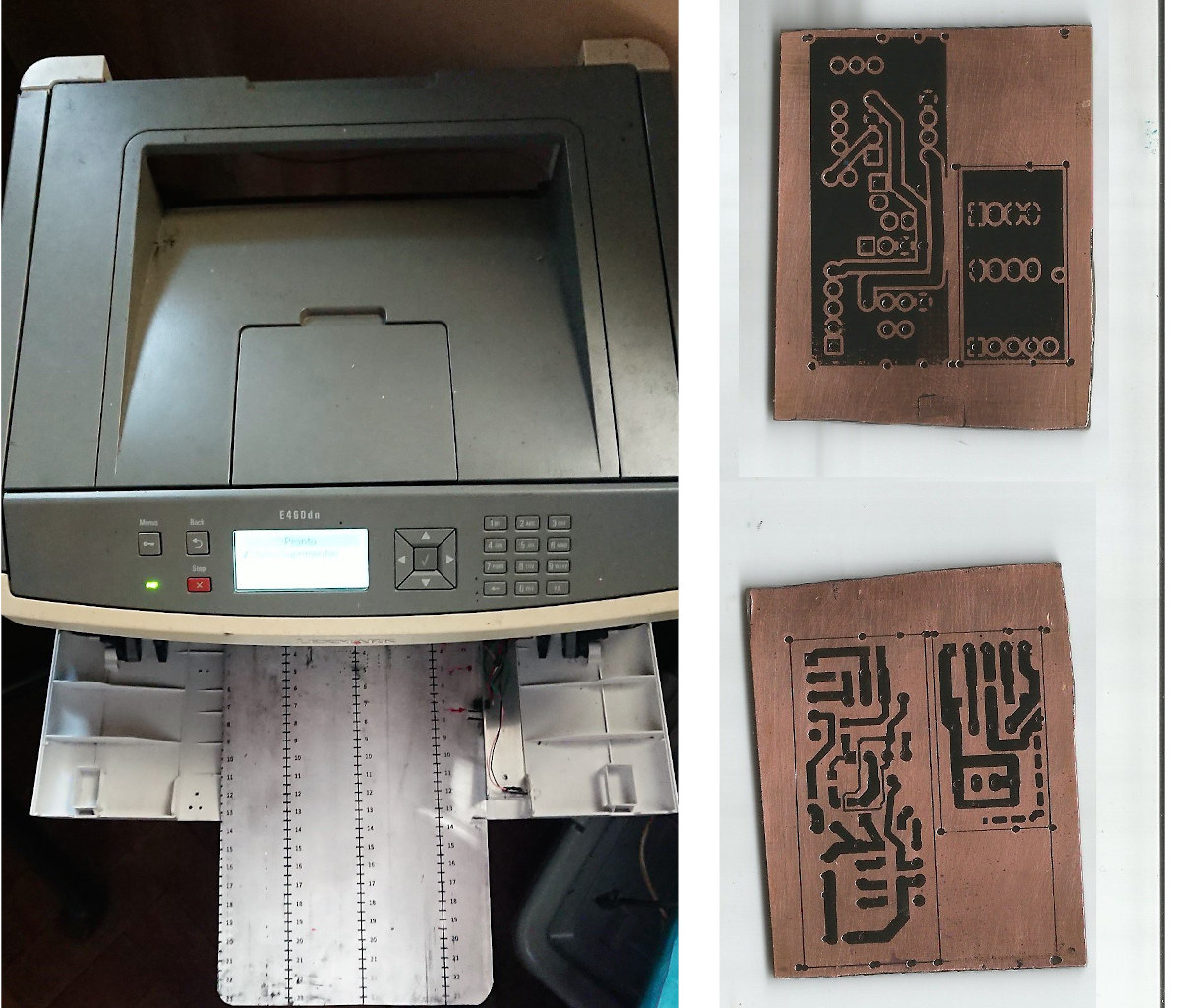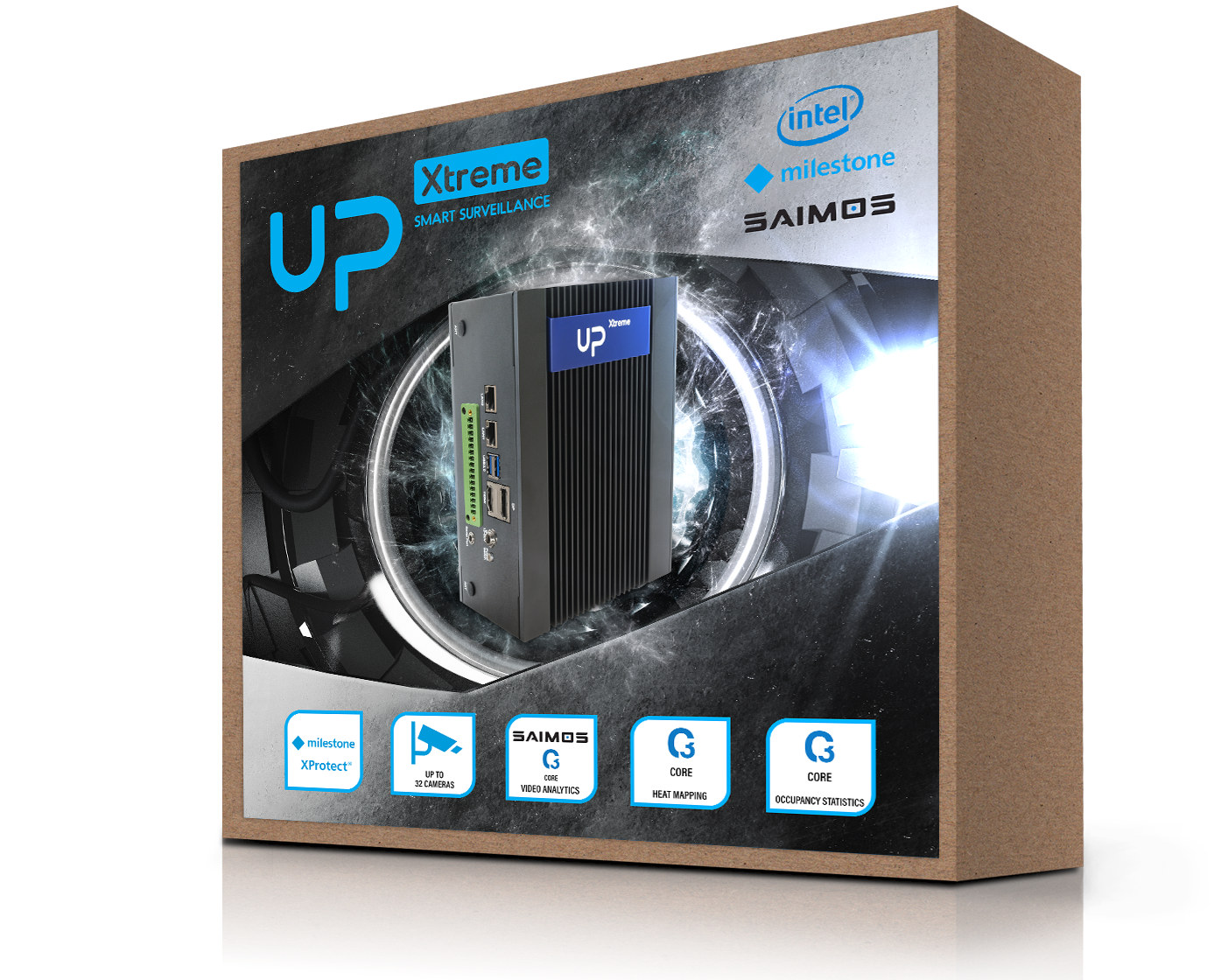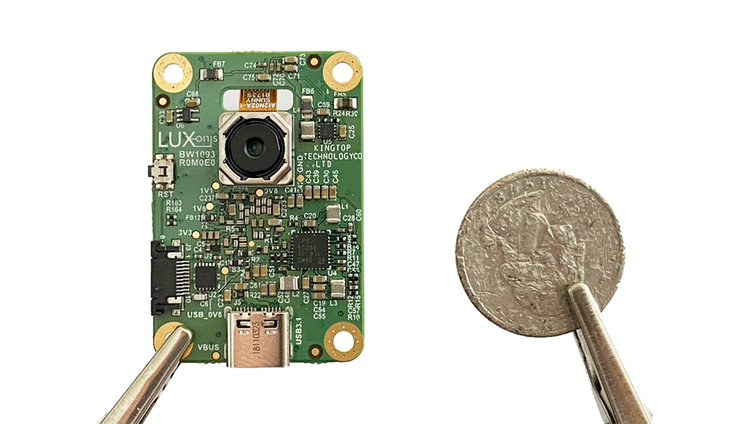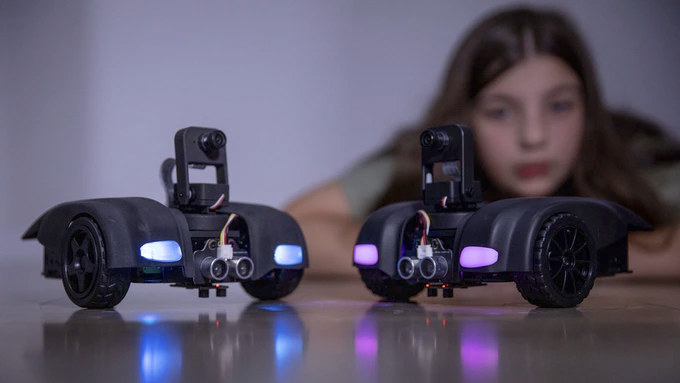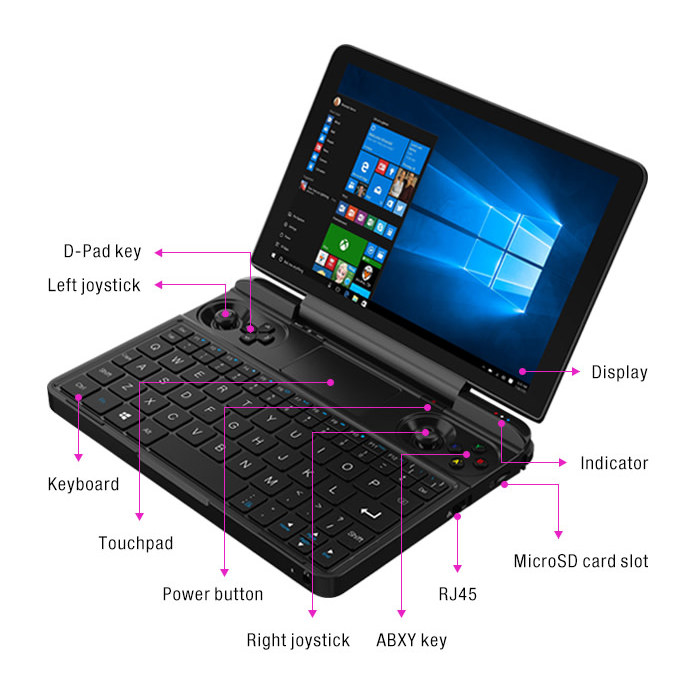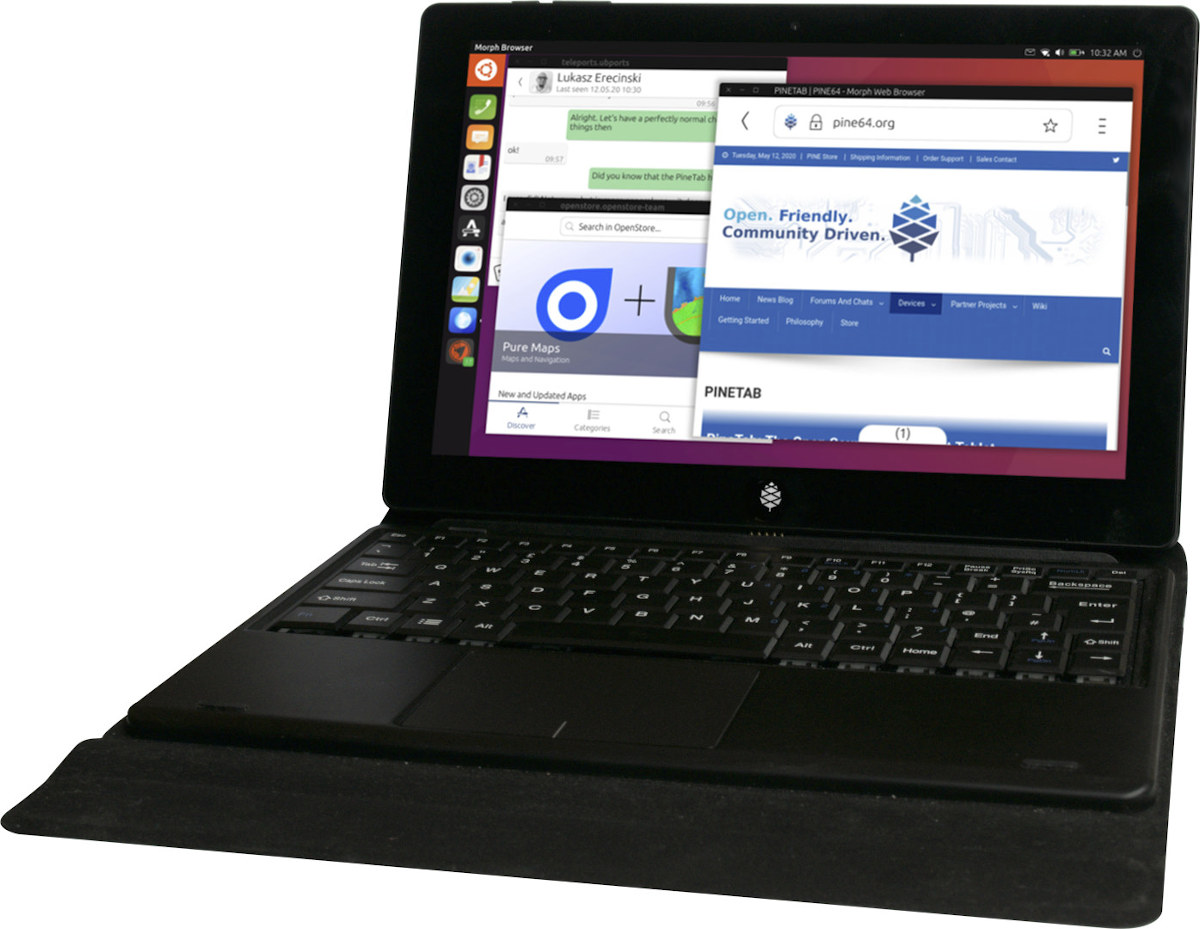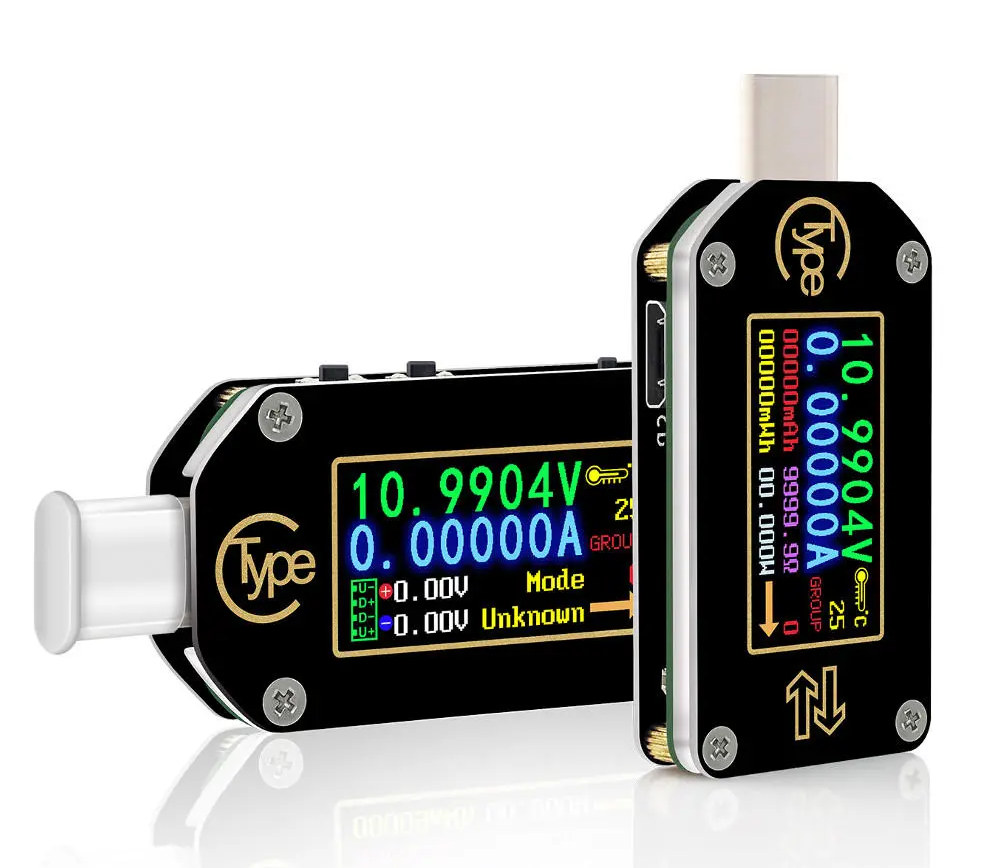PCB manufacturing services are pretty cheap and fast nowadays. But imagine some kind of highly transmissible virus hits the globe, somehow the whole global economy shuts down, and you are stuck alone at home with nothing but a Lexmark laser printer. What can you do? Well, you can make your own PCBs! No paper involved. That’s exactly what Vítor Barbosa did by converting a Lexmark E460(DN) laser printer into a PCB making machine, not because of COVID-19, but instead, because of the price and delays of ordering PCBs in Brazil. Using a laser printing to make your own PCB like take some work, notably to strip the printer of unused parts such as the fuser and fit it with Arduino Nano or Pro Mini board, an aluminum guide, some resistors and more. The modifications are all explained on Hackaday.io, and this is not a new idea as the project was […]
UP Xtreme Smart Surveillance Combines Whiskey Lake SBC, Myriad X VPUs, and Video Management & Analytics Software
We’re seeing more and more computer vision products with built-in artificial intelligence accelerated features like face recognition or object detection including AI cameras, facial recognition systems, and AI NVR systems. It’s great as a consumer because of less frequent and more accurate alerts in security camera systems but more worrying as a citizen due to mass surveillance. But the trend is here to stay, and AAEON has just announced the UP Xtreme Smart Surveillance solutions powered by UP Extreme Whiskey Lake SBC with either an Intel Core i5-8365UE or Intel Core i7-8665UE processor, as well as two Intel Movidius Myriad X VPUs using OpenVINO SDK. The system also leverages Milestone video management software (VMS) and SAIMOS video analytics software. Based on the photo above, the hardware looks to be UPX-Edge Embedded Computer which we previously covered in details at launch last December. Instead of hardware, the focus of Up Xtreme […]
megaAI 4K AI Camera Board Features Movidius Myriad X VPU (Crowdfunding)
megaAI 4K AI camera board reminds me of Kendryte K210 based boards such as Maixduino used for computer vision for tasks such as object tracking or face recognition, but instead of just handling QVGA at around 15 to 18 fps, megaAI can supports inference at 4K resolution up to 30 fps. The tiny board can achieve this feat by leveraging the 4 TOPS of AI processing power delivered by Intel Movidius Myriad X VPU (Vision Processing Unit) while consuming only around 2.5 Watts. megaAI board specifications: AI Accelerator – Intel Movidius Myriad X VPU delivering up to 4 TOPS (Trillion Operations Per Second) Camera – 12 MP 4056×3040 Auto-Focus (8cm-∞) camera with 81 degrees horizontal Field of View (HFOV) Video RAW Output – 4K @ 60FPS or 12MP @ 30FPS (with USB3.1 Gen2 Host) Hardware Image Encoding – 12 MP JPEG encoding Hardware Video Encoding: 4K H.265 encoding at 30 […]
Sponsored: Wondershare UniConverter is an All-in-One Video Converter, Recorder and Editor
You may have multiple programs or plugins to manage your videos, one to download videos from the web, one to edit your own videos, a separate video converter, etc… and they may have incompatibilities, leading to some painful headaches. Available for both Windows and Mac OS, Wondershare UniConverter should make handling videos much easier as an all-in-all video suite that allows you to convert, edit, and download videos, as well as burn video DVDs and transfer videos to mobile phones and other devices. Key features of Wondershare UniConverter include: Video conversion of 1000 formats at up to 30x faster speed without quality loss, and with the ability to greatly reduce video size. Video Editing with support for Cropping & trimming Saturation, brightness & contrast adjustment Special effects such as BW filter, Raindrop, and many other filters Watermarks, either text or images Adding external subtitles from local files (.srt, .ass, or […]
MARK AI Robot Kit Aims to Teach AI & Robotics to 12+ Years Old (Crowdfunding)
We’ve written about Kendryte K210 RISC-V AI processor, and Sipeed M1 module several times including in our getting started for Maixduino and GroveAI HAT boards for low-power AI inference such as object recognition or face detection using Arduino and Micropython programming. Shenzhen-based Tinkergen, a STEM Education owned by Seeed Studio, has now leveraged the low-cost processor to design MARK AI robot kit, where MARK stands for Make A Robot Kit, in order to processor an educational AI Robotics platform for children ages 12 years old and more. MARK will ship as a kit with the main parts and components including a chassis, a cover, two wheels, stepper motors, a pan-tilt camera with K210 processor, a 2.4″ LCD display, Grove & Arduino compatible MARKduino interface board, some sensors, and six AA batteries. Tinkergen offers pre-trained model to recognized objects like humans, books, pens, or smartphones, as well as traffic signs, numbers […]
GPD WIN Max Handheld Game Console Raises over One Million Dollars on First Day (Crowdfunding)
The first time we wrote about GPD product was for one of their portable game consoles, but since then the company has made many mini laptops that are fairly similar except for the lack of gaming controls. The company is now back with a portable game console powered by a 15W Intel i5-1035G7 Ice Lake processor designed for AAA games. GPD WIN Max has really made a splash, as the company raised close to 1.4 million dollars a little over a day after the launch on Indiegogo. GPD WIN Max specifications: SoC – Intel Core i5-1035G7 quad-core/octa-thread Ice Lake processor @1.20 GHz / 3.70 GHz (Turbo) with Intel Iris Plus 940 Graphics delivering performance similar to GeForce MX250; 15W configurable to 12W or 25W (But GPD offers 15, 20 and 25W configurable TDP). System Memory – Dual-channel 16GB LPDDR4X-3733 RAM Storage – Dual M.2 SSD sockets with support for single-sided […]
PineTab Linux Tablet Coming Soon for $100. Watch an Ubuntu Touch Demo in the Meantime
People have been trying to launch Linux tablets for years from PenPod 700 to Jolla Tablet, or more recently NTablet. You may not know or remember about those, as Linux tablets that actually shipped never really gained traction. But in early 2019, Pine64 started to mention development work on PineTab, an Allwinner A64 powered BSD/Linux tablet, and the company/community is really good at developing low-cost hardware and providing decent firmware support, so hopes were high. After COVID-19 related delay, Pine64 has now announced the first PineTab tablets would go for pre-order at the end of the month for $99. PineTab specifications: SoC – Allwinner A64 quad-core Cortex-A53 processor with Arm Mali-400 MP2 GPU System Memory – 2GB LPDDR3 RAM Storage – 64GB eMMC flash, MicroSD card slot, M.2 slot for SATA SSD Display – 10″ MiPi 720p Capacitive LCD Video output – Mini HDMI up to 4K @ 30 Hz […]
Bluetooth USB PD Tester Connects to Windows and Android/iOS Apps for Data Logging
We’ve written about USB-C PD power meters in the past such as Satechi USB Type-C power meter. Those allow you to measure (charging) voltage and current displayed on the screen part of the meter. But thanks to Bluetooth and USB connectivity, Riden TC66C USB PD tester allows you to capture and log data over a period of time by connecting to a Windows program or Android/iOS mobile app. There’s also a version without Bluetooth – TC66 – that only works with the Windows program over USB. Riden TC66C/TC66 Bluetooth USB PD tester specifications: Display 0.96″ color IPS display with 160×80 resolution Auto screen off time – Adjustable up to 9 minutes Measurements Voltage Range – 0.005V-30V +/- 0.1mV; accuracy: ±(0.5%+10digits at 23℃) Current Range – 0 to 5A +/- 0.01mA; accuracy: ±(1%+20 digits, at 23℃) Power Range – 0-150W Temperature Range – 0 to 80°C Load impedance range – 1Ω to 9999.9Ω Charge […]


